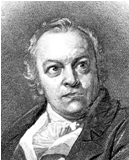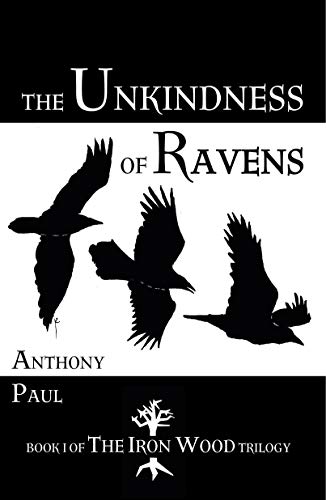Songs of Innocence and Experience by William Blake
Page 15 of 18 - 1 2 3 4 5 6 7 8 9 10 11 12 13 14 15 16 17 18 Purchase full notes for £5.95 (aprox $9.28)
Not only is the ‘God’ of this world a ‘God’ of judgement and condemnation, but human beings are actually born stained with the sin of Adam before they have had the chance to do anything right or wrong themselves. This extreme interpretation of the doctrine of original sin derives from St Augustine of Hippo and, via John Calvin, became prevalent in the evangelical protestant movements of Blake’s time.
Born bad, the child’s demonic energy must be immediately quelled and controlled, hence the binding in ‘swadling bands.’ Exhausted by the struggle, the baby chooses to ‘sulk upon [his] mother’s breast’ in an unsettling parody of that most innocent of images: the child breastfeeding from his mother. This may, indeed, be intended to remind the reader of the image of the Madonna and Child, particularly since ‘swadling bands’ recall the Christmas story. One further thing that must be remembered here is that the word ‘fiend,’ or devil, is not necessarily condemnatory in Blake, just as words like ‘Father’ or ‘God’ do not necessarily connote goodness. The devils are treated most sympathetically in The Marriage of Heaven and Hell , which also teaches that ‘Energy is the only life and is from the body…Energy is eternal life,’ and that those who try to restrain and conquer demonic energy (the angels) are not to be trusted.
A Little GIRL Lost
This plate sees the first really clear depiction of what may be called the ‘tree of experience.' Lush, secure, fertile trees frequently feature in the illustrations to the Songs of Innocence ; their counterparts in the Songs of Experience appear withered and barren and are covered in parasitic growths. The little girl in the poem, though, is an innocent figure, and this perhaps explains the soaring and attractive birds (and a squirrel) that also feature. A female figure (presumably Ona) also appears towards the top of the tree.
Unusually, the poem has an introductory stanza for which Blake has used standard lettering rather than italics. The idea present in ‘Children of the future Age’ shows Blake’s belief that massive cultural and social changes were afoot in the 1790s. He was correct in many respects: the drive for emancipation, liberty, democracy and free love associated with the French Revolution and the Romantic movement did have a major effect on European culture, though this was relatively short-lived.
Born bad, the child’s demonic energy must be immediately quelled and controlled, hence the binding in ‘swadling bands.’ Exhausted by the struggle, the baby chooses to ‘sulk upon [his] mother’s breast’ in an unsettling parody of that most innocent of images: the child breastfeeding from his mother. This may, indeed, be intended to remind the reader of the image of the Madonna and Child, particularly since ‘swadling bands’ recall the Christmas story. One further thing that must be remembered here is that the word ‘fiend,’ or devil, is not necessarily condemnatory in Blake, just as words like ‘Father’ or ‘God’ do not necessarily connote goodness. The devils are treated most sympathetically in The Marriage of Heaven and Hell , which also teaches that ‘Energy is the only life and is from the body…Energy is eternal life,’ and that those who try to restrain and conquer demonic energy (the angels) are not to be trusted.
A Little GIRL Lost
This plate sees the first really clear depiction of what may be called the ‘tree of experience.' Lush, secure, fertile trees frequently feature in the illustrations to the Songs of Innocence ; their counterparts in the Songs of Experience appear withered and barren and are covered in parasitic growths. The little girl in the poem, though, is an innocent figure, and this perhaps explains the soaring and attractive birds (and a squirrel) that also feature. A female figure (presumably Ona) also appears towards the top of the tree.
Unusually, the poem has an introductory stanza for which Blake has used standard lettering rather than italics. The idea present in ‘Children of the future Age’ shows Blake’s belief that massive cultural and social changes were afoot in the 1790s. He was correct in many respects: the drive for emancipation, liberty, democracy and free love associated with the French Revolution and the Romantic movement did have a major effect on European culture, though this was relatively short-lived.

